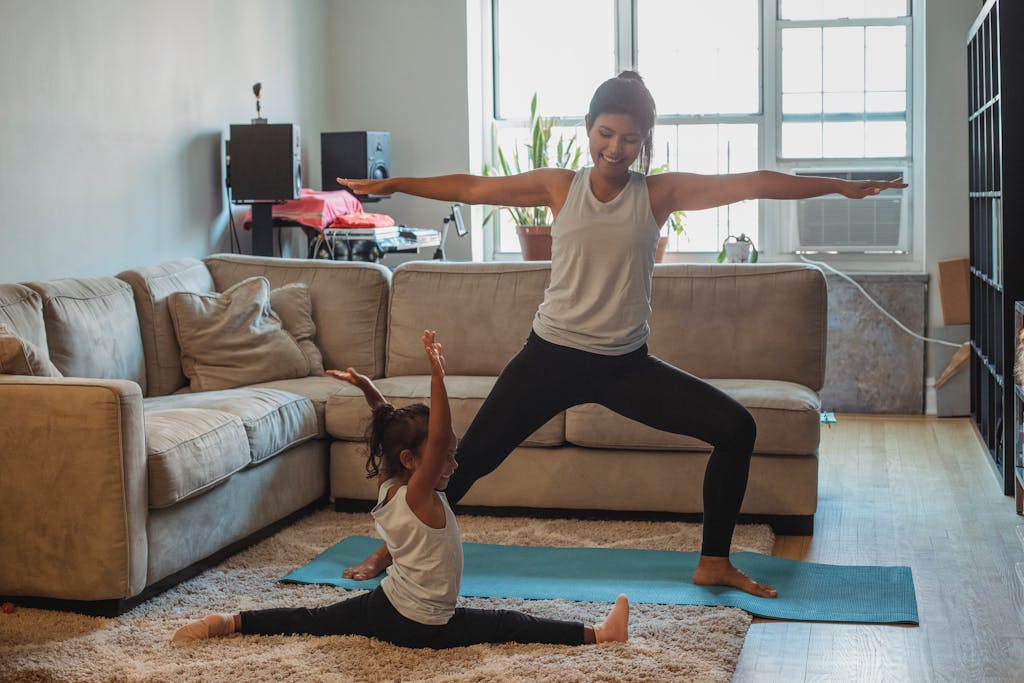Press PLAY to listen to this post.
February is Black History Month, a time to honor and celebrate the remarkable contributions of Black individuals throughout history. It's also an opportunity to teach our children about the importance of equality, kindness, and respect for all. One wonderful way to integrate these values is through kids yoga, which can help cultivate mindfulness, empathy, and a sense of community.
The Power of Yoga in Teaching Equality and Kindness
Yoga is more than just physical exercise; it's a practice that fosters mental and emotional growth. By introducing kids to yoga, we can help them develop qualities that are essential for promoting equality and kindness.
- Mindfulness and Self-Awareness: Yoga encourages children to be present and mindful of their thoughts and actions. This self-awareness helps them recognize and challenge any biases they may have, fostering a sense of equality and fairness.
- Empathy and Compassion: Through yoga, kids learn to connect with their inner selves and understand their emotions. This emotional intelligence allows them to empathize with others and act with kindness.
- Community and Inclusion: Yoga classes often involve group activities and partner poses that promote teamwork and cooperation. These experiences teach children the importance of inclusion and working together, regardless of differences.
Building a Better Future
By blending the practice of yoga with the lessons of Black History Month, we can help our children grow into empathetic, kind, and inclusive individuals. Teaching them the importance of equality and kindness through yoga not only honors the legacy of Black leaders but also builds a foundation for a more just and compassionate future.
Let’s celebrate Black History Month with a mindful heart and an open spirit, and let our kids yoga practice be a beacon of equality and kindness. Check out our friends at Black to Yoga and get Warrior Training because representation matters so we can create access to yoga for every child.
Press PLAY to listen to this post.
Presidents Day reminds us of what it means to be a great leader. Kids yoga is more than just a fun activity; it's a powerful tool that can help children develop essential leadership qualities. Through the practice of yoga, children learn valuable skills that go beyond physical exercise, shaping them into confident and capable leaders.
1. Confidence and Self-Esteem
Yoga encourages children to explore their capabilities and push their boundaries in a safe and supportive environment. By mastering poses and achieving personal goals, kids build confidence and self-esteem. This newfound confidence allows them to take on leadership roles with assurance and poise.
2. Focus and Discipline
Practicing yoga requires concentration and discipline. Children learn to focus their minds and control their movements, which enhances their ability to concentrate on tasks and achieve their goals. These skills are crucial for effective leadership, where focus and discipline are essential for guiding and inspiring others.
3. Emotional Intelligence
Yoga teaches children to be in tune with their emotions and understand how to manage them effectively. By practicing mindfulness and relaxation techniques, kids develop emotional intelligence, allowing them to empathize with others and navigate social interactions with grace. Strong emotional intelligence is a key trait of successful leaders.
4. Teamwork and Cooperation
Many yoga activities involve working with partners or groups, fostering a sense of teamwork and cooperation. Children learn to communicate effectively, support one another, and work towards common goals. These experiences prepare them to be collaborative leaders who value and respect the contributions of their team members.
5. Problem-Solving and Adaptability
Yoga often presents challenges that require creative problem-solving and adaptability. Kids learn to approach obstacles with a positive mindset and find innovative solutions. This resilience and adaptability are vital qualities for leaders, enabling them to navigate unexpected situations and inspire others to do the same.
Nurturing Future Leaders
By incorporating kids yoga into their routine, we can help children develop these essential leadership qualities. Whether they are leading a yoga class or guiding their peers in other activities, these young leaders will carry the skills they learn on the mat into all areas of their lives.
Let's encourage our kids to embrace yoga and discover their potential to lead with confidence, compassion, and creativity. Sign them up for yoga classes or camps.
Press PLAY to listen to this post.
It’s Valentine’s! Let’s show the love. How? Try these three mindfulness practices to nurture connection and support your loved ones.
1. Mindful Appreciation
With moms carrying 71% of the mental load at home, it’s essential to show appreciation for their efforts. Acknowledge the everyday tasks they perform and express gratitude. Simple words of thanks can make a significant impact. For dads, acknowledging that they can experience postpartum depression is crucial. Learn the signs and offer loving support when needed (Source, Source).
One effective way to help reduce the mental load for moms is by encouraging children to use the “notice and do” method. Instead of assigning chores, teach kids to observe what needs to be done around the house and take the initiative to do it. This fosters a sense of responsibility and reduces the burden on parents. (Source.)
3. Shared Mindful Activities
Engage in mindfulness practices together as a family. Whether it’s a short meditation, yoga session, or a simple breathing exercise, these activities can help everyone feel more centered and connected. Shared mindful moments strengthen bonds and promote emotional well-being.
Loving Support for Everyone
Remember, love is not just about grand gestures; it’s also about the small, everyday actions that show we care. By practicing mindful appreciation, encouraging proactive help, and sharing peaceful activities, we can create a nurturing environment for all family members.
Happy Valentine’s Day! Spread the love and mindfulness. 💖 This dad got it right!
Press PLAY to listen to this post.
Are you passionate about helping children thrive? The Warrior Training Kids Yoga Certification from It's Yoga Kids® is the perfect opportunity to make a positive impact on young lives. This comprehensive program equips you with the skills to teach yoga and mindfulness to children, promoting their physical, emotional, and mental well-being.
Here's Why You Should Consider It:
- Expert-Led Training: Learn from experienced instructors who are dedicated to children's health and happiness. Michelle Corley Wing, the founder, has over 20 years of experience in kids yoga and mindfulness.
- Evidence-Based Curriculum: The program is grounded in scientific research, ensuring that the techniques you learn are effective and safe for children.
- Holistic Approach: The training covers not just yoga poses, but also breathing exercises, games, and relaxation techniques that support children's overall development.
- Trauma-Sensitive Instruction: You'll gain knowledge on how to create a safe and supportive environment for all children, including those who have experienced trauma.
- Community and Support: Join a global network of certified instructors who are committed to making a difference. You'll have access to ongoing support and resources to help you succeed.
By becoming a certified kids yoga instructor, you'll be able to help children build confidence, manage stress, and develop healthy habits that will benefit them for life. Plus, you'll be part of a community that values kindness, equality, and the well-being of every child.
Ready to make a difference? Visit our training page to learn more and enroll in the Warrior Training Kids Yoga Certification program.
Start with a free information session. We’ll answer all your questions about Warrior 1, Warrior 2 PRO, and Warrior 3 Yoga Alliance Children’s Yoga Teacher Training. Meet with Michelle here.




